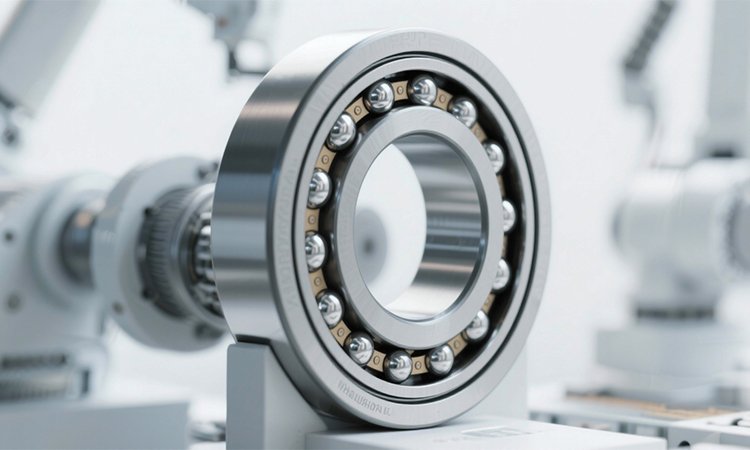Bearings are at the heart of mechanical systems, ensuring smooth rotation, accurate guidance, and reliable load support. In sectors like aerospace, robotics, automotive, semiconductor manufacturing, and medical devices, high precision ball and roller bearings play an especially critical role. Their ability to function flawlessly under tight tolerances and extreme operating conditions directly influences the performance, safety, and durability of machines.
Over the years, continuous innovations in design, materials, lubrication, and digital integration have transformed these components from mechanical workhorses into smart, high-performance enablers of modern engineering.
The Demand for Precision
The drive toward miniaturization, higher speeds, and greater reliability has placed unprecedented demands on bearings. In robotics, sub-micron positioning accuracy is essential. In aerospace, bearings must endure high loads at extreme temperatures while maintaining long life.
In machine tools, spindle bearings determine surface finish quality and machining accuracy. Meeting such diverse requirements has spurred significant innovations in high precision ball and roller bearing technology.
Advanced Materials and Coatings
Material science has been central to bearing innovation. Traditional through-hardened steel is giving way to advanced alloys and hybrid designs. Bearings with ceramic rolling elements, such as silicon nitride balls, offer lower density, higher hardness, and excellent corrosion resistance. This reduces centrifugal forces at high speeds and enhances wear resistance.
Surface engineering has also advanced. Coatings like diamond-like carbon (DLC), titanium nitride, and black oxide improve wear resistance, reduce friction, and extend service life. Such coatings are especially valuable in harsh environments where contamination or lubrication starvation can compromise performance.
Precision Manufacturing Techniques
High precision demands tight control over roundness, waviness, and surface finish. Innovations in superfinishing and lapping technologies now deliver bearing raceways and rolling elements with nanometer-level surface smoothness. Additive manufacturing is also emerging for producing complex cage geometries or lightweight structures that were previously impossible. Combined with CNC-based grinding and automated metrology, these techniques ensure consistency at scale.
Advanced Bearing Designs
Innovations in geometry have made bearings more robust. Modified raceway profiles distribute stresses more evenly, improving fatigue life. Cross-roller bearings provide higher rigidity for applications like robotics and precision stages. Split bearings ease installation and reduce downtime in industrial machinery. In machine tools, angular contact ball bearings with optimized contact angles and preload options allow higher spindle speeds without compromising rigidity.
Smart Bearings and Condition Monitoring
The digitalization wave has reached precision bearings. Sensor-integrated bearings can now monitor load, temperature, vibration, and speed in real time. These data streams are transmitted to control systems for predictive maintenance and performance optimization. This is particularly critical in aerospace, wind energy, and industrial automation, where unexpected failures can lead to catastrophic downtime or safety risks.
Lubrication Innovations
Lubrication remains a cornerstone of bearing performance. For high precision applications, conventional greases often fall short. Nano-additive lubricants reduce friction and protect surfaces under boundary lubrication conditions. Solid lubricants, including MoS₂ coatings and advanced polymer films, are used in vacuum or cleanroom environments where oil and grease are not feasible. Automatic and remote-controlled lubrication systems ensure the right amount of lubricant is supplied precisely when needed, extending bearing life and reliability.
Thermal Management Solutions
Precision bearings generate heat at high speeds, which can affect clearances and accuracy. Innovative designs now incorporate optimized cage geometries for better airflow and reduced friction. Some applications employ ceramic rolling elements to reduce heat generation. In extreme cases, active cooling channels are integrated into bearing housings to maintain stable operating temperatures.
Application-Specific Innovations
• Aerospace: Bearings capable of withstanding high g-forces, wide temperature variations, and shock loads. Hybrid ceramic designs are increasingly common.
• Robotics & Automation: Compact, lightweight bearings with high stiffness and low friction for precise motion control.
• Medical Equipment: Bearings for dental drills and surgical tools with ultra-low noise and vibration, resistant to sterilization processes.
• Semiconductor Industry: Bearings designed for cleanroom environments with solid lubrication to prevent particle contamination.
• Machine Tools: Ultra-high-speed spindle bearings with improved preload control and oil-air lubrication systems.
Sustainability and Energy Efficiency
Innovations are not limited to performance alone. Energy efficiency and sustainability are also driving bearing development. Low-friction coatings and optimized internal geometries reduce power losses, contributing to energy savings. Longer service life means fewer replacements, lowering material consumption and waste. Many manufacturers are also adopting eco-friendly production methods, aligning with global sustainability goals.
The Road Ahead
The future of high precision ball and roller bearings lies at the intersection of material science, digital intelligence, and advanced manufacturing. Smart bearings will become the norm, providing continuous feedback for system optimization. New materials such as graphene-based composites may further reduce friction and wear. At the same time, sustainable practices will ensure that innovation in bearing technology supports not just performance but also environmental stewardship.
Conclusion
High precision ball and roller bearings are far more than mechanical components. They are enablers of technological progress across industries that demand reliability, accuracy, and durability. Innovations in materials, coatings, manufacturing, lubrication, and digital integration are shaping bearings that are tougher, smarter, and more sustainable than ever before. As industries continue to push the boundaries of performance, precision bearings will remain at the very center of motion—quietly, but critically, powering the future.



